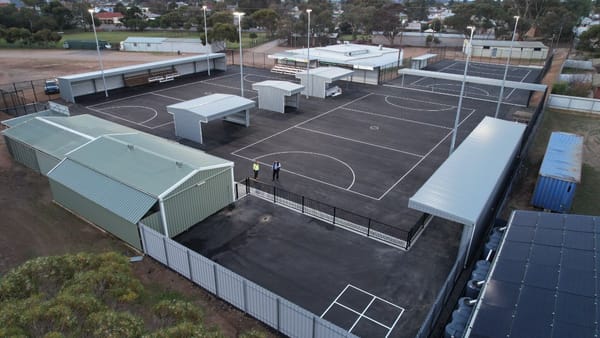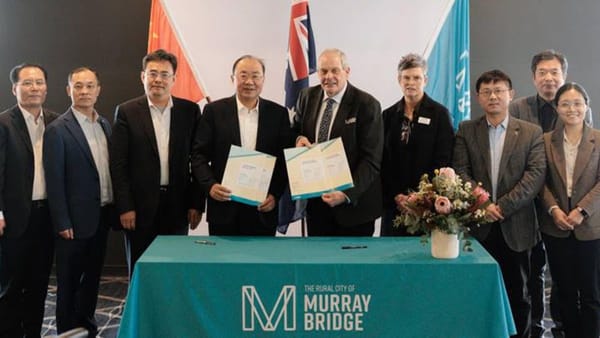East side CWMS showdown will have to wait
The Murray Bridge council has defused some community anger at two myth-busting drop-in sessions, but made one concession to opponents of a sewer scheme.

This story is free to read. Help Murray Bridge News tell more stories like this by subscribing today.
Opponents of a proposed sewer scheme on Murray Bridge’s east side might not have had their moment in the spotlight yet, but it will come.
About 400 people crowded into two drop-in sessions at Murray Bridge RSL on Tuesday, an indication of the huge interest in the council’s potentially costly plan to replace hundreds of failing septic systems with a community wastewater scheme.
The sessions did not take the form of a public meeting, with speakers presenting information and locals asking questions; instead, council staff showed maps of the proposed system, and spoke with individual residents about how they might be affected.
So there was no shouting, there were no arguments – though the two security guards at the door, and the line-up to sign a petition against the plan, gave some indication of the mood.
Mayor Wayne Thorley conceded that the council would have to organise a public forum, of the kind people had expected, sometime in the coming months.
That meeting would come after the current round of community consultation closed on September 27, he said, so that the council could tell people what it had heard.
“Tonight is … a chance for you to engage with some of our staff and the consulting engineers (and) ask your questions,” he said.
“Ultimately we’re here to pick up your feedback before we make any decisions.”
“Tonight is about listening,” council CEO Heather Barclay told the crowd.

Why would an east side CWMS be a bad idea?
The loudest argument against an east side sewer scheme has been its cost:
- a one-time connection fee of about $8000 per household
- the cost of plumbing to connect household toilets and drains with the nearest sewer main
- a quarterly service fee
The cost to residents would not be in the range of $35,000 per household, as an anonymous flyer dropped in some residents’ letterboxes had suggested.
That was how much the system would cost in total, but not how much residents would pay.
Funding from LGA South Australia would bring the cost down by more than $20,000 per household; and if the council couldn’t get the funding, the system wouldn’t be built.
Another misleading suggestion in the anonymous flyer was that households would have to pay an additional $25,000 to replace their septic systems; that was the cost residents might have to pay, eventually, if the sewer system was not built.
Still, the petition presented outside the meeting by local resident Rex Sleeman argued that the “significant financial burden” on residents would be too much to bear.
“We urge the council to reconsider this proposal and explore more affordable and less disruptive alternatives that do not place undue financial stress on the community,” it said.
“Together we can ensure our voices are heard.”
Mr Sleeman said his property wasn’t in the affected area, but he was concerned about the scheme being expanded in future.

Another critic of the scheme has been Riverglades resident and former councillor Jerry Wilson.
He circulated an email to east siders ahead of the meeting, arguing that no such drastic solution was needed to address a limited problem.
A report to the council last month suggested more than 300 household septic systems were on the verge of failure, but he believed the true figure might be closer to a dozen.
“Why can’t the council just make the non-compliant septic systems compliant and leave the rest alone?” he asked.
“(Household septic systems) might not be compliant with current standards, but … if they are still functioning to a required level, why change them?”
He also argued that the council had had difficulties managing similar systems at Woodlane and Riverglen in the past; and that having a sewer could be an incentive for the council to allow land zoning to change, creating smaller blocks and changing the character of the east side.
Why would it be a good idea?
The main argument in favour of exploring the CWMS idea right now, council executive Thuyen Vi-Alternetti told Murray Bridge News at the meeting, was timing.
The LGA South Australia subsidy which could greatly reduce the cost to residents of building the system – from $35,000 to $8000 per household – was currently only forecast to be available until 2026-27.
That didn’t mean a CWMS would have to be built before then – the council said residents would likely be given four to eight years to connect to any new system.
It was also possible that the funding opportunity could be extended between now and then.
But it was a reason to think about things now, rather than later.

In its myth-busting fact sheet, the council suggested a CWMS would offer:
- Convenience: residents would no longer need to manage their own septic systems
- Long-term cost savings, when compared with the cost of making septic systems compliant or installing new ones
- Flexibility to use land which was currently taken up with soakage trenches or tanks
- Improved public and environmental health
- Potential to reuse filtered wastewater for irrigation
Only properties which had been earmarked for connection to the system would have to pay for it, the council indicated.
While hundreds of east side properties had been included in maps of the sewer scheme, only those with blue pipes running up to them, within the red boundaries, would actually be connected.
Mr Thorley and Ms Barclay urged residents to fill in an online survey about the idea before consultation closed on September 27.
- More information, have your say: Visit letstalk.murraybridge.sa.gov.au before September 27.





